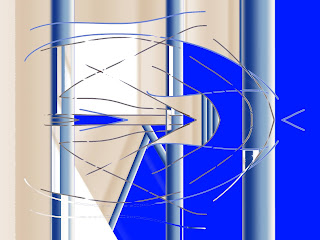In a hyper-connected and globally distributed world, effective leadership is an interface of strategy management, transformative changes and people-centricity.
We live in a complex world which has been interwoven through the internet and the latest technologies. The business is complex, with hyper-connected pieces and interdependent pieces. Thus, leadership now becomes more open and trans-disciplinary, influential and innovative.
Interfacing leadership is open & transparent, builds trust by facilitating peer to peer communication and open dialogues: Leadership is philosophy and a set of practices. “Command & control” style of management is gradually losing its steam as we step into the information exponential digital era with knowledge is only a click away. In reality though, much of the prevailing conceptual content in our cognitive interpretive interface is received from previous generations when the integration of our experiences is not adequately advanced and the world is not so interdependent. Leadership today is more about influencing, mentoring, harmonizing and orchestrating toward the next level of organizational maturity.
Often, the communication bottleneck and primary impediments to collaboration is a dissonance between different hierarchical layers of the organization. Interfacing leadership enhances peer to peer executive relationships, facilitates relevant dialogues which is a means of coordination based on expertise and responsibility, to bridge the weakest links when change is intense and there is never truly an effort toward enterprise cohesion. Highly effective leaders should become an interface across functional/industrial/geographical silos, connect business partners, consumer groups, and varying stakeholders, to facilitate peer to peer communication, foster open innovation and commerce in a fast changing world.
Interfacing leadership is a balancing force of scientific & artistic, strategic and tactical; local and global; intelligent & emotional, standardizing & personalizing views and disciplines: As the world -both nature world and human world are so dynamic with balance of energy, running a healthy organization or society is to enhance balance cycle and growth cycle with continuum. A good strategy is to engage, yield, redirect, and embrace the interaction of complementary and opposing forces. There are both “push and pull” factors in leadership practices. Great leaders are able to think both outside-in customer centricity and inside-out business efficiency. They can effectively straddle between short-term (tactical) and long-term (strategic) Therefore, they can become an interface to lubricate business relationships, integrate corporate resources, and synchronize business transformation as different parts of the organization perhaps adapt to change with different speed
A good leader knows that there is the time you need to push forward for getting people out of their comfort zone or reaching the predefined goals on time; there is also the time you need to pull all necessary resources and have people drive changes at their own pace for creating synergy. A great leader is an interface of holistic picture and a prioritized accomplishment; a frontline change champion and a driving force behind the scene; an insightful decision-maker and a gut-feeling intuitor; a policy setter and a disciplinary innovator, etc. The very goal of interface leadership is to focus on relationships between things rather than characteristics of things, have sensitivity to emergent trends and risks; bring the best of the best; unify difference, also encourage diversity, cultivate the next gen of leaders and professionals who can discover who they are, explore enriched life experience of becoming who they want to be, and shape a more advanced human society.
Global interface leadership can deliver advanced coordination across business entities and borders to address rising complexity and cross-boundary interdependencies: Compared to the industrial era with static knowledge and overly restrictive boundaries in the last century, today’s hyper-connected world has dynamic aspects with stacking of tolerances, variability, etc. It requires business leaders and professionals to be willing to listen to diverse viewpoints, broaden the perspective to fix misperceptions, misperception, misinterpretation, correct irrational behaviors and realign illogical processes or actions, etc. The global world becomes flattened as people all over the globe can share knowledge, cr-create fresh ideas and co-solve problems collaboratively. What are emergent traits and how to shape the new breed of world class leaders and managers to harmonize humanity? To be an excellent global interface, leaders and professionals should gain an in-depth understanding of the values of your audience, abstract various perspectives into world class insight based on an updated global perception, develop vision, empathy, cohesion, and strategic alliance across boundaries.
In a hyper-connected and globally distributed world, effective leadership is an interface of strategy management, transformative changes and people-centricity. It demands strategic thinking, interdisciplinary knowledge, hard-core expertise; and the common characteristics of successful global leaders fall into the soft-skills bucket, such as "emotional intelligence," "listening," and "authenticity."












































0 comments:
Post a Comment